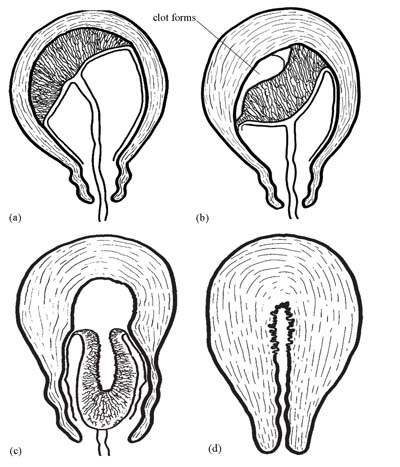6.1.1 Natural processes during the third stage
In a complication-free labour, the third stage is when natural physiological processes spontaneously deliver the placenta and fetal membranes. For this to happen unproblematically, the cervix must remain open and there needs to be good uterine contraction. In the majority of cases, the processes occur in the following order:
- Separation of the placenta: The placenta separates from the wall of uterus (see Figure 6.1a and b). As it detaches, blood from the tiny vessels in the placental bed begins to clot between the placenta and the muscular wall of the uterus (the myometrium).
- Descent of the placenta: After separation, the placenta moves down the birth canal and through the dilated cervix (see Figure 6.1c).
- Expulsion of the placenta: The placenta is completely expelled from the birth canal (see Figure 6.1d).
This expulsion marks the end of the third stage of labour. Thereafter, the muscles of the uterus continue to contract powerfully and thus compress the torn blood vessels. This, (together with blood clotting) quickly reduces and stops the postpartum bleeding.

6.1 The third stage of labour
